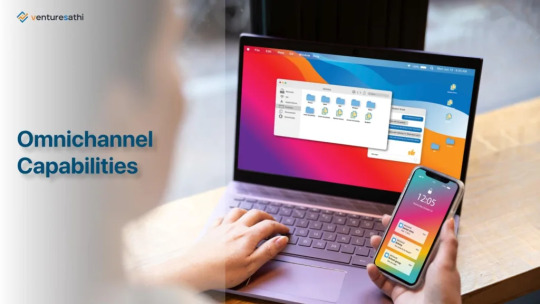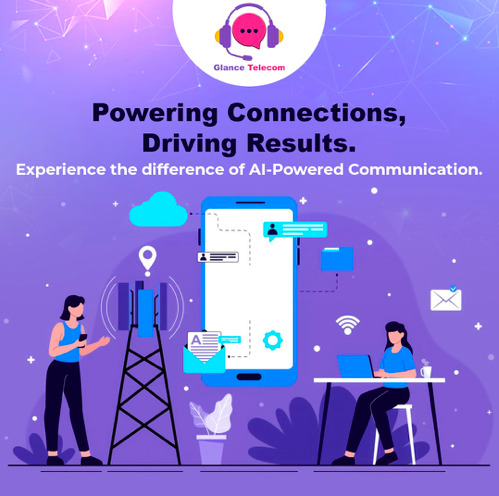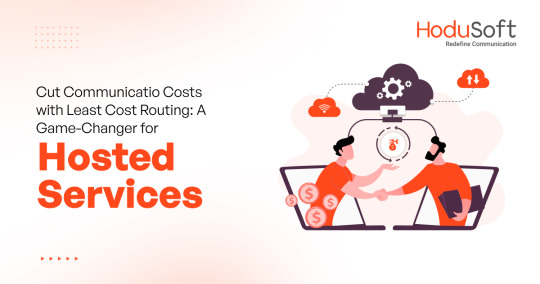#omnichannel call center
Explore tagged Tumblr posts
Text

Businesses seeking to leverage this power can achieve transformative results by prioritizing quality assurance (QA) practices. Integrating real-time analytics allows for continuous improvement, while a strong focus on call center compliance ensures every interaction meets the highest standards. Click Here To Read More: https://rb.gy/p4nen1
#VoIP phone systems#VoIP for business#Omnichannel contact center solution#Automated call distribution#Bulk SMS marketing#Interactive voice response (IVR) system#Call center compliance#VoIP call center#Global reach#Real-time analytics#singapore#call center#internet#telecom#voip
2 notes
·
View notes
Text
Top BPO Companies in the USA: Who Are the Leading Providers in 2025?
As businesses increasingly focus on optimizing operations, outsourcing customer service functions to BPO (Business Process Outsourcing) companies has become an essential strategy. For many companies, the USA remains a preferred location for outsourcing customer support and call center services. Whether you’re looking for cost savings, scalability, or a boost in customer experience management, understanding the landscape of the top BPO companies in the USA is crucial.
In this blog, we will explore the leading USA call center providers in 2025, and how they are reshaping customer service strategies to deliver exceptional support and value to businesses across different industries.

Why Outsource to a USA Call Center?
Before we dive into the list of the top BPO companies in the USA, it’s important to understand why outsourcing to a USA-based call center is a strategic decision for many businesses.
Proximity to Customers: A USA call center allows businesses to stay closer to their customer base. This proximity can improve communication and result in better understanding of the market, customer behavior, and needs.
2. Cultural Compatibility: One of the major benefits of outsourcing to the USA is cultural alignment. American call center agents are typically familiar with the preferences, language nuances, and expectations of U.S. customers, making customer interactions more effective.
3. Focus on Customer Experience Management: USA-based call centers are known for offering high levels of customer experience management. Many BPO companies in the USA offer advanced technologies, such as AI, machine learning, and CRM tools, to personalize customer service and deliver tailored experiences.
4. Data Security and Compliance: With strict regulatory standards and a commitment to data privacy, BPO companies in the USA ensure that sensitive customer information is handled securely. Compliance with laws such as HIPAA and GDPR gives businesses peace of mind that their data is protected.
Leading BPO Providers in the USA
Now that we understand the benefits, let’s explore the top BPO companies in the USA that are leading the industry in 2025.
1. TTEC (formerly TeleTech)
TTEC has been a leader in the BPO industry for many years, providing customer service outsourcing and customer experience management to businesses across various sectors, including technology, healthcare, and retail.
Why TTEC?
Global Reach: TTEC has a global presence, but its USA call centers are particularly well-regarded for their ability to scale and provide high-touch customer service.
AI and Automation: TTEC is known for leveraging artificial intelligence and automation to enhance customer interactions and streamline operations.
Focus on Customer Experience: TTEC places significant emphasis on delivering personalized customer journeys through seamless interactions across multiple channels.
Notable Stats:
Over 50,000 employees worldwide
A wide range of services, from voice support to digital services
Consistent recognition as one of the top BPO companies in the USA
2. Concentrix
Concentrix is another major player in the BPO industry, providing a full spectrum of customer support services, including technical support, sales, and customer care. It serves several industries, including finance, healthcare, retail, and technology.
Why Concentrix?
Tailored Solutions: Concentrix is known for customizing solutions to fit specific business needs, ensuring that customer experience management is aligned with a company’s brand and values.
Omnichannel Support: The company offers a variety of communication channels including voice, email, chat, social media, and more, ensuring a seamless customer experience.
Innovation: With a focus on continuous innovation, Concentrix utilizes cutting-edge technology to improve service quality, automate repetitive tasks, and enhance operational efficiency.
Notable Stats:
125,000 employees globally
Operates in over 40 countries
A proven track record with a variety of Fortune 500 clients
3. Alorica
Alorica is a customer experience management leader that offers outsourced call center services across multiple industries, including telecommunications, banking, healthcare, and retail. Known for its innovation in digital customer service, Alorica provides scalable and flexible BPO services for clients of all sizes.
Why Alorica?
Omnichannel Customer Support: Alorica integrates voice, chat, email, social media, and self-service technologies to deliver comprehensive support.
Focus on Customer Experience: Alorica’s business model is centered on customer satisfaction, helping companies drive loyalty and retention through top-tier support.
Innovation and Technology: By combining human expertise with AI-driven solutions, Alorica delivers more efficient, personalized experiences for customers.
Notable Stats:
100,000+ employees across 14 countries
Specializes in both front-office and back-office solutions
Recognized as one of the top BPO companies in the USA for customer service excellence
4. Sitel Group
Sitel Group provides BPO solutions across 27 countries, with its USA call center operations being one of its key strengths. The company offers customer support services through voice, chat, email, and social media, enabling brands to offer a personalized and consistent customer experience.
Why Sitel Group?
Customer Experience Management: Sitel Group has a long-standing reputation for delivering exceptional customer experiences, helping clients improve customer satisfaction and retention.
Global Presence with Local Expertise: With a strong presence in the USA, Sitel combines global capabilities with local expertise, enabling businesses to create tailored solutions for their customer base.
Data-Driven Insights: The company provides detailed analytics and reporting that help businesses understand customer behavior and improve service delivery.
Notable Stats:
Operates over 150 locations in 25 countries
More than 75,000 employees worldwide
Offers solutions for a variety of industries, including automotive, healthcare, and retail
5. Zendesk
While Zendesk is primarily known for its customer service software, the company also offers USA call center outsourcing through its platform. Many businesses use Zendesk’s integrated solutions to provide omnichannel support and improve customer experience management.
Why Zendesk?
Omnichannel Support: Zendesk allows businesses to integrate support across email, chat, voice, and social media, all on one platform, providing customers with seamless service across touchpoints.
Customer-Centric Technology: With AI-powered features, chatbots, and automation, Zendesk helps companies optimize their customer service workflows.
Data-Driven Insights: Zendesk’s advanced reporting and analytics features enable businesses to track customer service performance and improve the overall customer experience.
Notable Stats:
Over 100,000 customers globally
Award-winning customer service platform
Serving industries like technology, e-commerce, and education
Key Insights and Statistics
Customer Experience Management: A study found that businesses focusing on improving customer experience management can increase customer satisfaction by as much as 20%, leading to a 30% increase in revenue.
USA Call Centers: In 2025, USA-based call centers are expected to grow by 7% annually, driven by demand for higher-quality customer service and advanced technologies like AI and automation.
Cost-Effectiveness: While outsourcing customer service within the USA can be more expensive than offshore options, many businesses find that the ROI from improved customer satisfaction and loyalty justifies the cost.
Conclusion
As we move into 2025, the demand for customer-centric service continues to grow, and businesses are increasingly relying on USA call centers to help them meet customer expectations. The top BPO companies in the USA, such as TTEC, Concentrix, Alorica, Sitel Group, and Zendesk, are leading the charge with innovative solutions, scalability, and a relentless focus on customer experience management.
Choosing the right BPO provider is a strategic decision that can significantly impact your business’s bottom line. By partnering with one of these top providers, businesses can enhance customer interactions, increase efficiency, and stay ahead of the competition.
Outsourcing your customer service to a USA call center is not just about cost savings—it's about providing an exceptional experience to your customers. In 2025, investing in top-tier BPO companies in the USA will help ensure your company stands out in a crowded marketplace and builds long-lasting customer relationships.
0 notes
Text
Customer support automation
Streamline your customer support with AntBuddy’s automation tools! Enhance efficiency, resolve inquiries faster, and deliver consistent support across channels. Automate responses, reduce operational costs, and improve customer satisfaction. Take your support service to the next level—try AntBuddy’s customer support automation today and elevate your customer experience!
#service platforms#CRM solutions USA#call center software#integrated customer#omnichannel communication#solutions in retail#retail businesses
0 notes
Text
How to use Omnichannel & what's Benefits for omnichannel software
#whatisomnichannel#how to use omnichannel software#call center dialer#vert age dialer#call center dialer ]#bpo
0 notes
Text
#softphone app#tragofone#softphone#voip softphone#voip#omnichannel communication strategy#multi channel call center
0 notes
Text
The Future of Contact Centers: Omnichannel, AI, Analytics, Scalability, Security

Omnichannel Capabilities
Omnichannel technology revolutionizes customer interactions with businesses by offering various communication channels, ensuring convenience, flexibility, and preserving conversation history. This marks a transformative shift from the traditional single-channel support call center paradigm.
Benefits of Omnichannel Support:
Improved Customer Experience –
Omnichannel support technology in call centers elevates the customer experience by enabling businesses to accommodate individual preferences, fostering a more satisfied and engaged customer base.
2. Efficient Issue Resolution –
The technology trend enhances the customer experience by enabling seamless channel switching, improving issue resolution, and providing agents with a comprehensive understanding of the customer's history and context.
3. Enhanced Analytics –
Omnichannel support in call center technology provides businesses with valuable insights into customer behaviour and preferences, enabling them to tailor services, marketing strategies, and product offerings.
This data-rich environment enhances customer satisfaction and loyalty, making it a crucial aspect of modern contact center outsourcing.
AI-Powered Chatbots and Virtual Assistants
Artificial intelligence (AI) is revolutionizing customer service by redefining call center technologies. These advancements streamline internal processes, boost agent efficiency, and elevate user experience through improved reasoning speed and accuracy. This trend is reshaping the landscape of customer engagement.
Benefits of AI-Powered Chatbots and Virtual Assistants:
24/7 Availability –
Call center technology provides round-the-clock availability, enabling customers to seek assistance, resolve queries, and engage with businesses at any time, including holidays or outside regular business hours.
2. Faster Response Times –
AI-powered solutions deliver unparalleled speed in processing and responding to customer queries, reducing wait times, and enhancing customer satisfaction. Chatbots and virtual assistants can handle routine requests in seconds, contributing to a more efficient customer experience.
3. Cost Savings –
AI technology automates routine tasks, saving businesses time and resources. This allows them to concentrate on more complex, value-added tasks, resulting in substantial long-term cost savings.
Data Analytics and Customer Insights
In the digital age, data is crucial for modern contact center operations, enabling businesses to leverage analytics and customer insights to enhance strategies, personalize experiences, and improve performance.
Benefits of Data Analytics and Customer Insights:
Informed Decision-Making –
Data analytics aids businesses in making informed, data-driven decisions by analysing customer interactions, identifying trends, and anticipating customer needs. This process improves service quality, refines product offerings, and enhances marketing strategies.
Personalization –
Call center technology enables personalization in customer service, empowering businesses to analyze customer behaviour and preferences. This leads to tailored interactions, personalized product recommendations, and targeted marketing campaigns.
Performance Tracking –
Data analytics technology enables businesses to accurately track and analyze key performance indicators (KPIs) in real-time. This enhances customer service operations by measuring response times, satisfaction scores, and issue resolution rates.
Security and Compliance
Data security and regulatory compliance are crucial in modern business operations, especially in contact center outsourcing, where the handling of sensitive customer information is a daily occurrence.
Benefits of Security and Compliance:
Regulatory Adherence –
GDPR, HIPAA, and PCI DSS regulations mandate strict data handling for businesses, necessitating robust encryption, access controls, and secure data handling mechanisms in modern contact center outsourcing.
2. Data Protection –
Data protection is both a legal and ethical responsibility. Modern technology places a strong emphasis on advanced security measures to safeguard customer information, build trust, and maintain reputation.
For a more in-depth exploration of the future of contact center, we invite you to read our blog for comprehensive insights: Technology’s Role in Modern Contact Center Outsourcing.
0 notes
Text
Call Center IVR Software: Benefits, Uses, Best Practices

If you're running a call centre, you know that customer satisfaction is key. You also know that managing a call centre can be a lot of work. IVR software can help take some of the load off the agents by automating certain tasks.
But what is IVR software? And how can it benefit your call centre? In this article, we'll answer those questions and more. We'll also give you some best practices for using IVR software and tell you whether or not it's the right solution for your call centre.
What Is IVR Software?
IVR systems are computer systems that interact with callers to guide them through a series of options. IVR systems are often used by call centres as a way to automate customer service.
Some common features of IVR systems include
● The ability to play pre-recorded messages
● Collect input from the caller
● Route calls to the appropriate destination
IVR systems can be used for a variety of purposes, including customer service, sales, marketing, and even human resources.
How Can IVR Benefit Your Call Centre?
IVR systems can be a great addition to any call center, providing benefits such as increased productivity, improved customer satisfaction, and cost savings.
An IVR system can help to increase productivity in a call centre by automating customer service. This means that a lot of calls can be handled more quickly and efficiently, freeing up agents to deal with other tasks.
An IVR system can help to improve customer satisfaction by giving customers the option to reach a human agent if they are not able to resolve their issue through the automated system.
An IVR system can also help to save money for a call centre. This is because an IVR system can handle large volumes of calls without the need for additional staff.
In addition, an IVR system can help to reduce the amount of time that agents spend on each call, which reduces costs.
Is IVR the right solution for your call centre?
It depends on the specific needs of your business and your customers. However, there are some factors to consider that will help you decide if IVR is the right solution for your call center-
● Size of Your Call Centre
If you have a small call centre with only a few agents, IVR may not be necessary. However, if you have a large call centre with many agents, IVR can help to increase productivity by automating customer service.
● Type of Calls That Your Call Centre Receives
If most of the calls are simple and can be easily handled by an automated system, then IVR may be a good solution. However, if most of the calls are complex and require human interaction, then a multi-level IVR may be the best solution
● The Needs of Your Customers
If your customers are comfortable using an automated system and do not need to speak to a human agent, then IVR may be a good solution. However, if your customers prefer to speak to a human agent or if they have complex questions that need to be answered, then the IVR solution would need to have the smart outing capabilities.
Conclusion
When determining if an IVR system is the best solution for your call centre, there are several factors to consider. The size of your call centre and the types of calls you typically receive are two important factors. Additionally, you need to take into account the needs of your customers when making a decision. By taking all of these factors into consideration, you can determine which IVR system is right for your call centre.
#predictive dialer#call center dialer#hosted call center solutions#auto dialer software#predictive dialer software#call center solutions#ivr software#omnichannel contact center software#cloud call center software#outbound call center software
1 note
·
View note
Text
omnichannel call center
The call center solutions make it more effective and simplified to manage all different communication channels within a single platform and provide omni channel customer services. It also helps in automating customer journeys, boosting agent productivity, building a strong and professional business brand, and leveraging several other advantages.
0 notes
Text
0 notes
Text
VICIDial vs. Proprietary Call Center Solutions
VICIDial is a popular open source call center solution, but the question is, is it powerful enough so it can compete with the advanced proprietary call center solutions? Read this article to know more about VICIDial and its competitiveness in 2021.
Many businesses prefer using open source solutions and technologies because they are cheaper. At least that is what they seem to be. Some of the open source technologies and solutions actually work exceptionally well without a doubt. However, it is necessary to check whether the open source solution or technology you are using is still good enough to use or you are stuck because of it. In this article, I am going to talk about one of the most popular open source solutions in the VoIP and call center industries, which is VICIDial.
VICIDial is an open source call center solution. It is in use by thousands of call centers and businesses across the globe for many years. As we all know, there are many contact center solutions available in the market and they have many amazing features available. Therefore, the question that all VICIDial experts must think of would be is this software is competitive enough to sustain among these advanced proprietary and hosted call center solutions.
Let’s explore more about this by inspecting important areas, which help in judging the competitiveness of any call center solution.
1. Advanced features
As VICIDial is an open source call center solution, it does not have advanced features by default. If you want to get the advanced features, then you will need to invest in VICIDial customization. By hiring a VICIDial expert, the advanced features need to be developed and integrated. This will force you to invest in the VICIDial customization, which will result in losing the main reason for using this call center software, which is using it for free as it is an open source solution.
2. Support of unified communication channels
Nowadays, call centers and businesses using a call center solution to cater to customer demands need to use unified communication channels, which are listed below:
WhatsApp
Live chat
Facebook
Twitter
SMS
Email
A call center solution that supports all these communication channels is called an omnichannel call center solution. VICIDial only supports phone calls. The remaining communication channels are not available by default. To add the required communication channels into it, you would not only need to get the APIs of those communication channels, but you would also need to invest in the development of modules to show the communication stream. It means along with the VICIDial customization to add the APIs of different communication channels, you will also need to invest in module development. This will make the whole process quite expensive.
Concluding notes
Being an open source call center solution, VICIDial has limited features. If you are running a call center or a customer care department at a very small scale and your customers are not that demanding, then VICIDial is good to use. However, if you are operating in a competitive industry, then, in that case, you will need advanced features and integrations in this software. That will make this software even more expensive. In this case, using VICIDial would not be the right choice. You better find a proprietary solution and use it in your favor.
If you need any help with VICIDial, AC InfoSoft has a team of VICIDial experts that can help you achieve never seen before features and several other advantages. To learn more about VICIDial-related services offered by the company, please visit
https://www.acinfosoft.com/vicidial-services/
0 notes
Text

We don't just offer traditional communication solutions. We're at the forefront of innovation, leveraging the power of AI to take your interactions to the next level. Experience the difference with Crystal-clear VoIP calls, Effortless SMS solutions and AI-powered features. https://bit.ly/4cG4F2U #GlanceTelecom #AI #Communication #Results #VoIP #SMS #BusinessSuccess #CloudSolutions #CustomerSuccess Glance Telecom
#AI-powered communication solutions#VoIP solutions#Call center solutions#SMS solutions#Global communication#Customer service#Cutting-edge technology#Reliable communication#Cost-effective solutions#Customer satisfaction#Business growth#Building relationships#AI-powered call center software#Best VoIP providers for businesses#How to improve customer service with SMS#Global communication solutions for enterprises#Increase customer loyalty through communication#VoIP phone systems#VoIP for business#Omnichannel contact center solution#Automated call distribution#Bulk SMS marketing#Interactive voice response (IVR) system#Call center compliance#VoIP call center#Global reach#Real-time analytics
1 note
·
View note
Text
Cut Communication Costs with Least Cost Routing: A Game-Changer for Hosted Services

Least Cost Routing, or LCR, is a strategy used by businesses to route calls over the most cost-effective telecommunications provider.
This system evaluates multiple routes or carriers for a given call and automatically selects the least expensive option that meets the required quality standards.
Whether it’s voice, video, or data traffic, LCR ensures that communication costs are minimized without compromising service quality.
In the realm of hosted services, where businesses provide communication infrastructure as a service such as voice over internet protocol (VoIP), unified communications (UC), and more.
LCR becomes an essential tool to manage costs. The reason? Hosted services often depend on multiple third-party telecom providers to ensure reliability and scalability.
LCR intelligently selects the most affordable routing option from these providers based on real-time factors like pricing, quality, and availability.
Why Is LCR a Game-Changer for Hosted Service?
LCR is a massive game changer for hosted service due to several reasons. Here are some of those:
1. Cost Reduction
The most obvious advantage of LCR is cost savings. Traditional communication models usually rely on fixed pricing structures, meaning you’re locked into one provider or one pricing model.
LCR breaks this pattern by continuously seeking out the lowest cost routes in real-time, so your business only pays for the most cost-effective solution. For hosted service providers, this can make a huge difference.
2. Enhanced Call Quality and Reliability
LCR isn’t just about saving money; it also enhances the reliability and quality of communication.
By monitoring the performance of different carriers, LCR can help route calls through the most stable and highest-quality network available at any given time. This is particularly valuable for hosted services that rely on high uptime and seamless communication for their clients.
3. Scalability and Flexibility
For hosted services, scalability is a major consideration. LCR offers the flexibility to adapt and scale as needed.
Since it automatically evaluates costs and quality in real-time, your business can manage larger traffic volumes without worrying about escalating telecom expenses.
4. Simplified Billing and Transparency
Another hidden advantage of LCR is the transparency it provides in billing. With traditional telecommunication models, businesses may be faced with complicated billing systems that make it difficult to understand where the money is going.
LCR simplifies this by offering clear insights into routing choices and associated costs, which can improve budgeting accuracy and accountability.
How Hosted Service Providers Benefit from LCR
Hosted service providers can derive a wide range of benefits from LCR such as:
1. Cost-Effective VoIP Services
Hosted VoIP providers can leverage LCR to optimize their voice traffic and offer highly competitive pricing for clients.
By selecting the most cost-effective carriers for outbound and inbound calls, hosted VoIP businesses can ensure they provide affordable services without sacrificing voice quality.
2. Smart Routing for UCaaS
Unified Communications as a Service (UCaaS) providers rely on various communication mediums, including voice, video, and messaging.
By using LCR, these providers can ensure all forms of communication are routed through the best network, keeping costs low and performance high.
3. Minimized Overhead for SMBs
Small to medium-sized businesses (SMBs) using hosted services for their communication needs often struggle with high telecom bills.
LCR can help them access enterprise-level communication solutions without breaking the bank, providing them with tools that were once only available to large corporations.
Conclusion,
In conclusion, Least Cost Routing is transforming the way businesses approach their communication costs. For hosted service providers, it’s a powerful tool that cuts overhead, improves reliability, and provides greater flexibility.
Whether you’re running a VoIP service, offering UCaaS, or managing communication for any other hosted solution, implementing LCR can unlock significant savings and operational efficiencies.
Source: https://hodusoftpvt.blogspot.com/2025/02/cut-communication-costs-with-least-cost.html
#contact center software#call center software#contact center software solution#call center software solution#omnichannel contact center software#omnichannel cx suite#ip pbx software#cloud based contact center software#contact center software for BPO#insurance call center software#call center#software#hodusoft
0 notes
Text
Ensuring Consistency Across Channels: Building Customer Trust in Retail
Trust isn’t built overnight—it’s a mosaic of small, meaningful interactions that a customer experiences with a brand. In the retail industry, where customers engage across physical stores, e-commerce websites, mobile apps, and even social media, ensuring consistency across these channels has never been more crucial. A single misstep—be it conflicting information, a delay in service, or a broken shopping experience—can erode trust and send customers looking elsewhere.
To win customer loyalty, retail brands must master the art of omnichannel consistency. This involves aligning services, messaging, and interactions across every platform. Here’s a deep dive into why consistency matters and how to achieve it effectively.

The Importance of Consistency in Retail
Imagine this: a customer sees a discount on your website but encounters a higher price at your physical store. Frustrated, they might leave with a negative impression, even if the price discrepancy was unintentional. Scenarios like these highlight how inconsistencies can break the customer’s trust.
Consistency is more than just having the same price or offer across channels. It’s about creating a seamless experience where customers feel valued no matter how or where they interact with your brand. Here’s why it’s indispensable:
Boosts Trust: When customers know they can rely on your brand to deliver consistently, trust builds organically.
Improves Customer Retention: A consistent experience makes customers more likely to return.
Enhances Brand Perception: A brand that’s consistent is often seen as more professional and dependable.
The Challenges of Omnichannel Consistency
Retailers face several hurdles when striving for consistency, especially with multiple customer touchpoints. These include:
Disconnected Systems: Many retailers still operate using siloed systems, which makes it difficult to share data across departments.
Lack of Real-Time Updates: Inventory discrepancies and outdated information can lead to a poor experience.
Misaligned Customer Support: Without a unified approach, customer service can feel disjointed, leaving customers frustrated.
Fragmented Messaging: Different teams managing different channels often result in conflicting communication.
Retailers need robust strategies to address these challenges and offer a uniform experience across platforms.
Strategies to Ensure Consistency Across Channels
The good news? These challenges aren’t insurmountable. Retailers can achieve omnichannel consistency by focusing on these key strategies:
1. Centralized Data Systems
Having a unified platform to store customer data, inventory information, and service details is critical. Centralized systems ensure that all teams—from marketing to customer service—are working with the same information.
2. Unified Customer Support
A consistent support experience is a cornerstone of building trust. By partnering with retail call center services, brands can ensure that every customer interaction—whether on a call, chat, or email—is cohesive. This approach eliminates the confusion of varying responses and ensures customers always get accurate and timely assistance.
3. Expert-Led Support for Consistent Messaging
Maintaining consistency across channels requires a skilled and knowledgeable support team. By outsourcing customer interactions to retail call center services providers like us, retailers can ensure every customer receives the same level of care and accurate information, no matter the platform. Our teams are equipped to handle complex queries, align with your brand's tone, and deliver seamless experiences, helping to enhance customer trust.
4. Leveraging Real-Time Insights for Customer-Centric Strategies
Partnering with a retail BPO solutions provider ensures that you’re equipped with actionable, real-time data to enhance the customer experience. By analyzing customer interactions across channels, we help identify trends and pinpoint areas for improvement—whether it’s addressing frequent cart abandonment or improving response times during peak hours. These insights enable retailers to adapt quickly to customer needs, building loyalty through proactive and informed decisions.
How Technology Helps Achieve Consistency
Technology plays a crucial role in bridging the gaps between various customer touchpoints. However, while in-house teams can certainly use these tools, partnering with an experienced retail customer service company with experts who specialize in omnichannel solutions can take consistency to the next level. Here's how:
AI-Driven Chatbots: While many retailers implement AI-powered chatbots for consistent customer support, expert call center providers can ensure that these bots are trained to align perfectly with your brand's tone and messaging, delivering seamless interactions across every platform.
Real-Time Inventory Management: While in-house systems can track inventory, working with a BPO provider ensures that your inventory data is synchronized across all channels—be it e-commerce or physical stores—providing real-time, accurate information to customers.
Comprehensive Customer Journey Mapping: A BPO provider can offer sophisticated customer journey mapping that not only tracks each touchpoint but also proactively identifies and resolves inconsistencies before they impact the customer experience, enhancing brand trust.
By leveraging these technologies through expert service providers, retailers can ensure a more consistent, efficient, and scalable customer experience—without the internal resource strain.
Trust Is the Foundation of Loyalty
In retail, consistency isn’t just a nice-to-have; it’s a non-negotiable for earning and keeping customer trust. By addressing challenges, leveraging technology, and collaborating with expert service providers like us, retailers can create seamless experiences that customers love.
Ready to build trust and loyalty through consistent omnichannel support? Contact us now and explore how our tailored solutions can help your brand stand out in the competitive retail landscape. Let’s shape a seamless future together.
0 notes
Text
How to Meet Future Challenges with Innovative Call Center Solutions
In today's fast-paced digital landscape, call centers play a pivotal role in shaping customer experience and brand reputation. As businesses face evolving challenges, adopting innovative call center solutions becomes crucial to staying competitive. Here’s how you can meet future challenges with cutting-edge call center solutions.
1. Embrace Artificial Intelligence (AI) and Automation
AI and automation are transforming call centers by enhancing efficiency and improving customer service. Chatbots and virtual assistants can handle routine inquiries, freeing up human agents to tackle more complex issues. Implementing AI-driven analytics can help predict customer behavior, allowing for proactive service and personalized interactions.
Key Benifits:
· Improved first-call resolution rates · Enhanced customer satisfaction through personalized service
2. Leverage Omnichannel Support
Customers now expect seamless interactions across various channels, including phone, email, social media, and live chat. An omnichannel approach ensures consistent service quality, regardless of the platform used. Integrating all communication channels into a unified system helps agents access complete customer histories and provide coherent support.
Key Benefits:
· Unified customer interactions · Increased accessibility · Better customer retention
3. Implement Advanced Analytics
Data is the backbone of informed decision-making. By utilizing advanced analytics, call centers can gain insights into customer preferences, agent performance, and operational bottlenecks. Predictive analytics can forecast call volumes, helping in resource allocation and scheduling.
Key Benefits:
· Data-driven decision making · Enhanced operational efficiency · Improved customer experience
4. Focus on Agent Empowerment
Empowering agents with the right tools and training is essential for delivering exceptional service. Knowledge management systems, real-time assistance through AI, and regular training programs ensure that agents are well-equipped to handle customer inquiries effectively.
Key Benefits:
· Increased agent productivity · Reduced turnover rates · Higher service quality
5. Prioritize Security and Compliance
With increasing concerns over data privacy, ensuring robust security and compliance in call center operations is critical. Implementing secure communication channels, regular audits, and adhering to regulatory standards helps protect customer information and build trust.
Key Benefits:
· Enhanced data security · Compliance with regulations · Increased customer trust
6. Utilize Cloud-Based Solutions
Cloud-based call center solutions offer flexibility, scalability, and cost-effectiveness. They allow businesses to quickly adapt to changing demands, scale operations as needed, and reduce overhead costs associated with traditional infrastructure.
Key Benefits:
· Scalability and flexibility · Cost savings · Easy integration with other systems
7. Foster a Customer-Centric Culture
At the heart of all innovations should be a commitment to exceptional customer service. By fostering a customer-centric culture, call centers can ensure that all strategies and technologies are aligned with the goal of enhancing customer satisfaction.
Key Benefits:
· Strong customer loyalty · Positive brand reputation · Continuous improvement in service quality
Conclusion
As the call center industry continues to evolve, staying ahead of future challenges requires a proactive approach and the adoption of innovative solutions. By leveraging AI and automation, embracing omnichannel support, implementing advanced analytics, empowering agents, prioritizing security, utilizing cloud-based solutions, and fostering a customer-centric culture, businesses can ensure their call centers are well-equipped to deliver superior service in the face of emerging challenges.
2 notes
·
View notes
Text
#omnichannel dialer#omnichannel softwarer#call center dialer softwar#vert age dialer#auto call dialer software
0 notes
Text
In the United States, call center companies play a pivotal role in providing customer support, sales assistance, technical troubleshooting, and various other services for businesses across a multitude of industries. These companies employ thousands of individuals nationwide and operate through various models, including in-house, outsourced, and virtual call centers. Let's delve into the landscape of call center companies in the USA.
1. Overview of the Call Center Industry:
The call center industry in the USA has witnessed significant growth over the years, driven by the increasing demand for cost-effective customer service solutions and the globalization of businesses. Today, call centers cater to diverse sectors such as telecommunications, banking and finance, healthcare, retail, technology, and e-commerce.
2. Major Players:
Several major call center companies dominate the industry, including:
Teleperformance: One of the largest call center companies globally, Teleperformance operates numerous centers across the USA, offering multilingual customer support, technical assistance, and sales services.
Concentrix: Concentrix is another key player, known for its innovative customer engagement solutions. It provides a wide range of services, including customer care, technical support, and digital marketing services.
Alorica: Alorica specializes in customer experience outsourcing solutions, serving clients in various industries. It offers services such as customer support, sales, and back-office support.
Sitel Group: Sitel Group is renowned for its customer experience management solutions. With a global presence, Sitel operates call centers in multiple locations across the USA, providing tailored customer support services.
TTEC: Formerly known as TeleTech, TTEC offers customer experience solutions, digital services, and technology-enabled customer care. It focuses on delivering personalized customer interactions through its contact centers.
3. Industry Trends:
The call center industry is continually evolving, driven by technological advancements and changing consumer preferences. Some notable trends include:
Digital Transformation: Call centers are increasingly integrating digital channels such as chat, email, and social media to enhance customer engagement and support omnichannel experiences.
AI and Automation: Automation technologies, including artificial intelligence (AI) and chatbots, are being adopted to streamline processes, improve efficiency, and provide faster resolutions to customer queries.
Remote Workforce: The COVID-19 pandemic accelerated the shift towards remote work in the call center industry. Many companies have embraced remote workforce models, allowing agents to work from home while maintaining productivity and efficiency.
Data Analytics: Call centers are leveraging data analytics tools to gain insights into customer behavior, preferences, and trends. This data-driven approach enables them to personalize interactions and optimize service delivery.
4. Challenges and Opportunities:
Despite its growth, the call center industry faces several challenges, including:
Staffing Issues: Recruiting and retaining skilled agents remains a challenge for many call center companies, particularly amid competition for talent and high turnover rates.
Security Concerns: With the increasing prevalence of cyber threats, call centers must prioritize data security and compliance to protect sensitive customer information.
However, the industry also presents numerous opportunities for growth and innovation:
Expansion of Services: Call center companies can diversify their service offerings to meet the evolving needs of clients, such as expanding into digital customer engagement, analytics, and consulting services.
Focus on Customer Experience: By prioritizing customer experience and investing in training and technology, call centers can differentiate themselves and gain a competitive edge in the market.
Globalization: With advancements in technology and communication infrastructure, call center companies can explore opportunities for global expansion and tap into new markets.
5. Future Outlook:
Looking ahead, the call center industry is poised for further growth and transformation. As businesses increasingly prioritize customer-centric strategies, call center companies will play a crucial role in delivering exceptional customer experiences and driving business success.
In conclusion, call center companies in the USA form a vital component of the customer service ecosystem, serving a wide range of industries and helping businesses enhance customer satisfaction and loyalty. With ongoing technological innovations and evolving customer expectations, the industry is poised for continued growth and innovation in the years to come.
2 notes
·
View notes